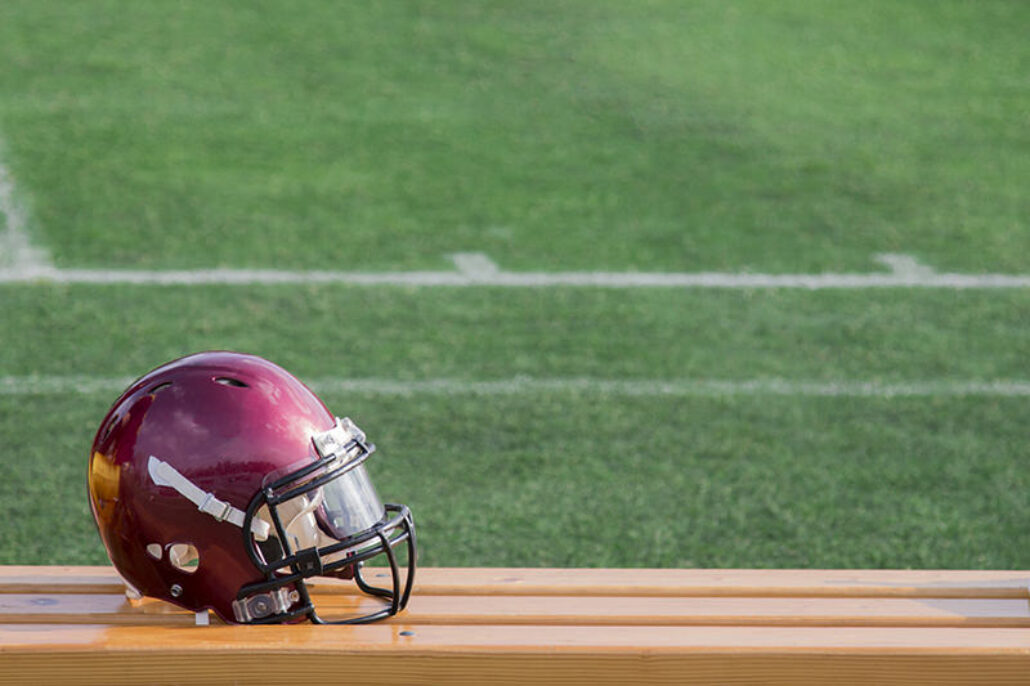We want our children to enjoy sports safely. With fall in the air and football season upon us, we have some tips to help you choose the safest football helmet for your child.
The excitement of high school football is a celebrated fall tradition in Minnesota and across the country, but over the last few years, research has made us aware of the concussion risks of this sport. Coaches are teaching proper techniques for blocking and tackling. Organizations such as the Centers for Disease Control and Prevention (CDC) are developing concussion policy statements to heighten safety practices and respond immediately and appropriately to concussion symptoms.
As parents, we want to do our part to protect our children with the best helmets and safety gear. It would be great if there were a helmet that made players concussion proof, but that magical helmet doesn’t exist. Football helmets alone don’t eliminate the risk of concussion. However, they do protect players from other serious injuries, including eye injuries and fractures of the face and skull.
Follow these guidelines to choose a tested, certified helmet that fits properly:
- Measure head circumference. Position a measuring tape about an inch above the eyebrows, and measure the circumference of your child’s head. Use this measurement to select a helmet size. If your child’s head is between sizes, opt for the smaller helmet size.
- Assess the helmet fit. The front edge of the helmet should be about an inch above the eyebrows, and the fit should be tight, but comfortable. Cheek pads should not slide, the skin on the forehead should move with the helmet, and the helmet should not sag on the player’s nose. When you press down on top of the helmet, pressure should feel evenly distributed.
- Try several models of helmets. Selecting a helmet is like selecting a running shoe. Head shapes vary, and so do helmet brands. Inflate the padding to see how well the helmet conforms to your head shape. Don’t use the chin strap to make the helmet fit; your helmet should feel secure before you strap it on.
- Choose a helmet with the NOCSAE seal. The National Operating Committee on Standards for Athletic Equipment (NOCSAE) is the U.S. organization that certifies helmets for safety. The phrase “Meets NOCSAE standards” will be stamped or branded on the back of the helmet. Once you’ve chosen a certified helmet, don’t alter it in any way. Don’t wear a used helmet unless it has a seal inside the helmet confirming that it has been recertified by a NOCSAE-licensed reconditioner. Helmets are usually recertified every one to two years.
We are here to support active, healthy lifestyles for all of our patients, including the student and professional athletes under our care. If you have questions about football safety or suspect that your child may have suffered a concussion, we are here to work with you to help your child recover and return to play. We want your family to enjoy all of the benefits a safe and active lifestyle has to offer.
Summit Orthopedics offers comprehensive sports medicine expertise
From Olympians to pro athletes to kids in youth sports and those that just want to be more active—Summit Orthopedics delivers expert care by fellowship-trained sports medicine physicians. If you are recently injured or concerned about ongoing pain, Summit Orthopedics sports medicine specialists have the expertise to evaluate your discomfort and develop a plan to quickly and safely help you get back to being active.
Start your journey to stronger, healthier athletic condition. Find your sports medicine expert, request an appointment online, or call us at (651) 968–5201 to schedule a sports medicine consultation.
Summit has convenient locations across the Minneapolis-St. Paul metro area, serving Minnesota and western Wisconsin. We have state-of-the-art centers for comprehensive orthopedic care in Eagan, MN, Vadnais Heights, MN, Plymouth, MN, and Woodbury, MN, as well as several additional community clinics.
